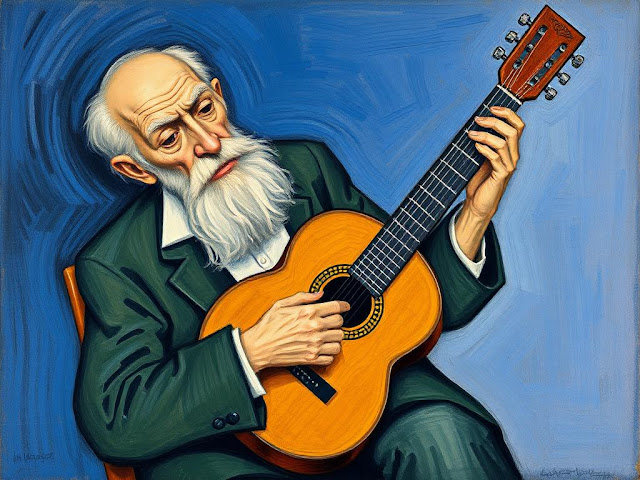Pablo Picasso: A Pioneer of Modern Art and Creativity
Introduction
Pablo Picasso, the Spanish artist and sculptor, stands as one of the most pivotal figures in the history of modern art. Renowned for his groundbreaking contributions, Picasso redefined artistic norms and inspired generations. This blog delves into his journey, creative evolution, and the lasting impact of his innovative works.
Early Life and Education
Born on October 25, 1881, in Málaga, Spain, Pablo Picasso grew up in an environment steeped in artistic influence, thanks to his father, José Ruiz Blasco, a painter and instructor. From an early age, Picasso displayed an extraordinary aptitude for art, earning recognition as a prodigy. By the age of 13, his talents surpassed those of his father. Picasso honed his skills through formal education at Barcelona’s Royal Academy of Fine Arts.
The Blue and Rose Periods
Picasso’s formative years saw the emergence of two distinctive styles:
- The Blue Period (1901–1904): Dominated by shades of blue, this phase captured themes of hardship, loneliness, and despair. Masterpieces like The Old Guitarist and La Vie reflect this introspective tone.
- The Rose Period (1904–1906): Marked by a lighter palette of pinks and oranges, this phase featured lively subjects, including circus performers and joyful themes. Works such as Family of Saltimbanques and Boy with a Pipe stand out.
Revolutionizing Art Through Cubism
Together with Georges Braque, Picasso spearheaded Cubism, an innovative movement that fragmented objects into geometric shapes, presenting multiple perspectives simultaneously. This style redefined artistic expression, with notable creations like Les Demoiselles d’Avignon. Another defining work, Guernica, offered a poignant critique of the atrocities of war, serving as an enduring symbol of resistance.
Expanding Artistic Horizons
Picasso’s artistic exploration was boundless, delving into various styles and mediums:
- Neoclassicism: A phase that embraced traditional forms and themes.
- Surrealism: Infusing dreamlike and symbolic elements into his works.
- Sculpture and Ceramics: Showcasing his versatility, Picasso created intricate sculptures and experimental ceramic pieces.
The Story Behind Guernica
Among his masterpieces, Guernica (1937) stands as a powerful anti-war statement, inspired by the tragic bombing of a Spanish town during the Civil War. Its stark black, white, and gray palette heightens its emotional resonance, making it a universal call for peace.
A Life Rich in Influence
Picasso’s personal life was deeply intertwined with his art. Relationships with key muses, including Fernande Olivier, Olga Khokhlova, and Françoise Gilot, left an indelible mark on his creations. Inspired by cultural movements and historical art, Picasso’s boundless curiosity drove his innovations.
A Legacy of Creativity and Courage
Over his seven-decade career, Picasso created an estimated 50,000 pieces of art, ranging from paintings and drawings to sculptures and ceramics. His influence transcends the art world, inspiring various fields, including film and literature. Museums in his honor, such as those in Barcelona and Paris, celebrate his unparalleled contributions.
Interesting Tidbits About Picasso
- His birth name comprises 23 words, a tribute to various saints and relatives.
- As a toddler, his first word was “pencil.”
- A politically active figure, Picasso was associated with the French Communist Party.
Conclusion
Pablo Picasso’s journey exemplifies the boundless potential of creativity and innovation. His fearless approach to challenging norms has left an everlasting impact on art and culture. For those aspiring to unleash their creativity, Picasso’s life offers a roadmap to embrace change and reimagine possibilities.
Let Picasso’s legacy inspire you to view the world through a different lens, fostering creativity and challenging the ordinary.
Find out my favorite Health and Fitness products here: https://linktr.ee/iamatiiq





.jpg)
.jpg)
Comments
Post a Comment